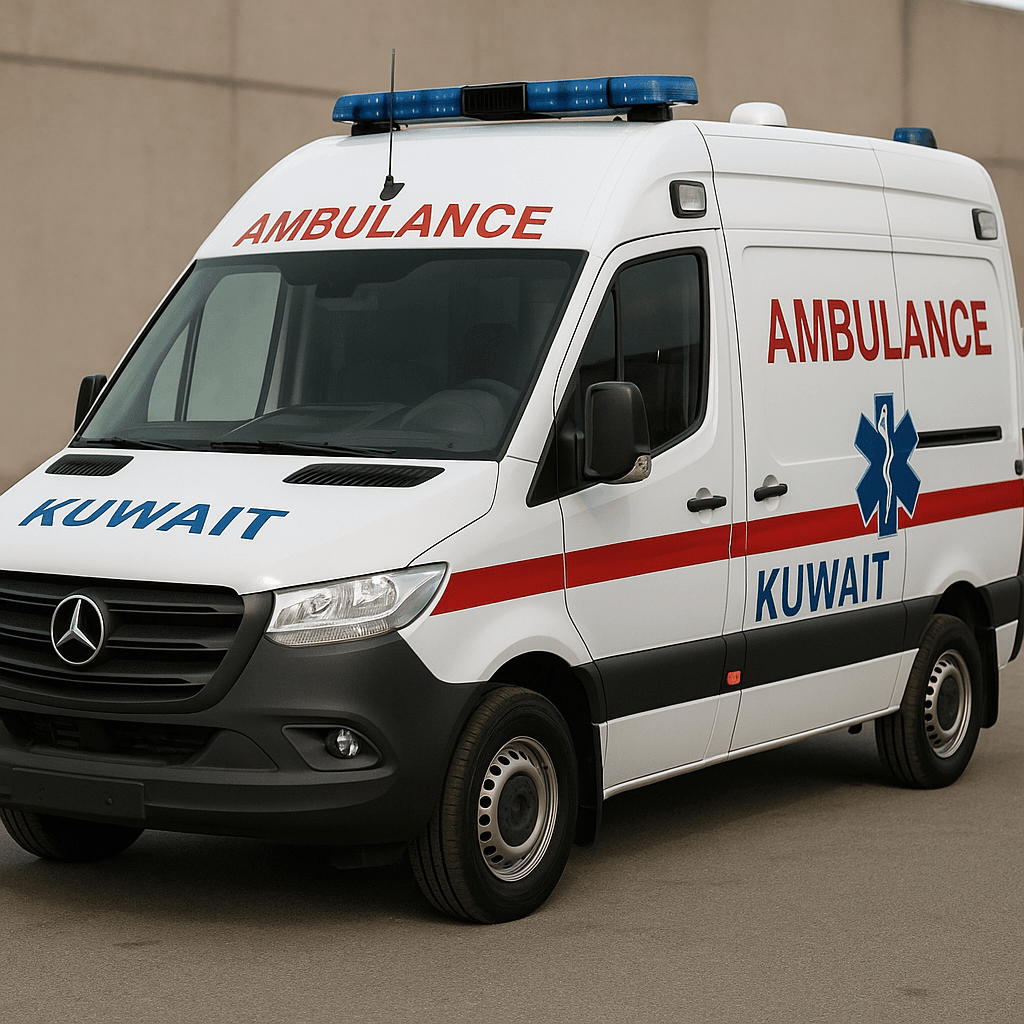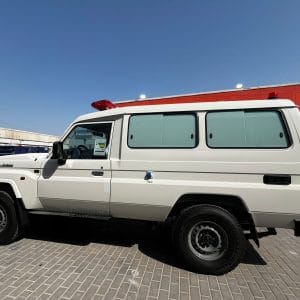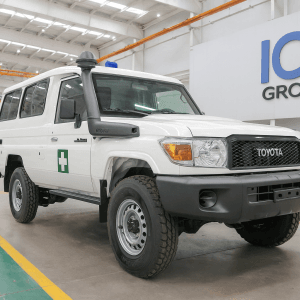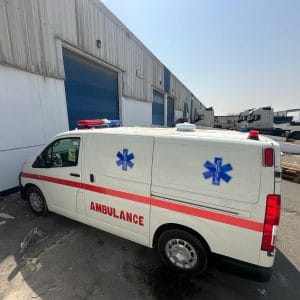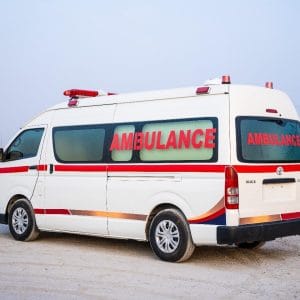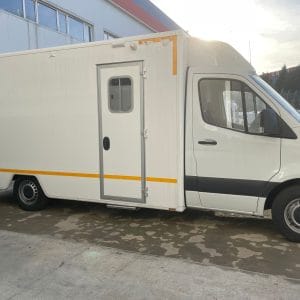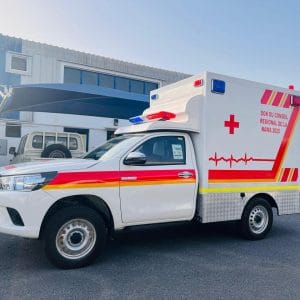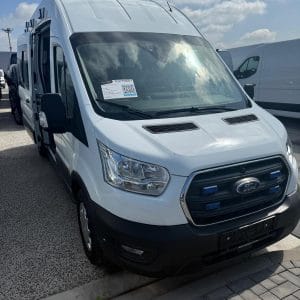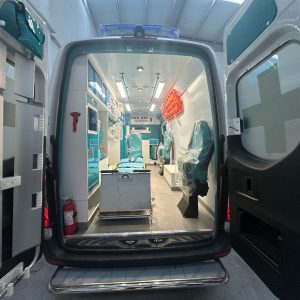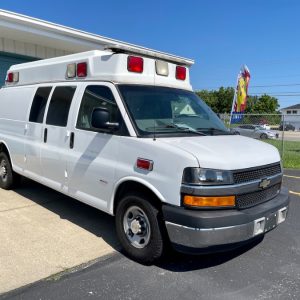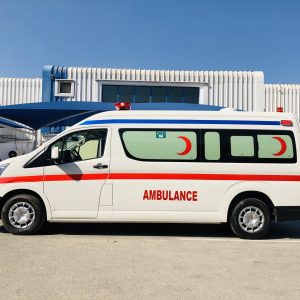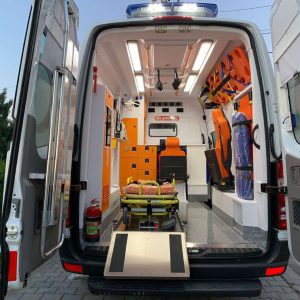Kuwait Ambulance Tender; The State of Kuwait is making a monumental leap forward in its emergency medical services (EMS). The Ministry of Health (MoH) has announced a major Kuwait Ambulance Tender for the supply and likely deployment of 200 fully-equipped ambulances. This is not just a procurement exercise; it’s a strategic investment in national healthcare infrastructure, aiming to bring world-class, pre-hospital care to every citizen and resident.
For global manufacturers and suppliers of medical devices and ambulance fit-outs, this tender represents a significant opportunity. The detailed technical specifications reveal a commitment to cutting-edge technology, robust safety, and operational efficiency. This blog post provides a thorough analysis of the tender’s requirements, breaking down the critical medical equipment needed for each of the 200 units.
Understanding the Scale: More Than Just Vehicles
This Kuwait Ambulance Tender goes beyond simply purchasing 200 vehicles. It involves equipping them to the highest international standards, ensuring they are ready to handle a wide range of medical emergencies, from routine patient transfers to critical trauma and cardiac events. The specifications demand interoperability, data connectivity, and durability suitable for the Kuwaiti climate and operational demands.
The emphasis is on creating a fleet that is:
- Technologically Advanced: Integrating digital patient monitoring and live data transmission.
- Clinically Versatile: Capable of treating adult, pediatric, and in some cases, neonatal patients.
- Operationally Resilient: Featuring long battery life, easy disinfection, and minimal maintenance.
- Safety-Certified: Complying with major international standards like FDA, CE, UL, and IEC.
Detailed Breakdown of Mandatory Medical Equipment
Here is a comprehensive look at the required equipment for each ambulance, as per the tender documentation.
A. Powered Ambulance Stretcher (1 per ambulance)
The stretcher is the centerpiece of any ambulance, and the Kuwait MoH specifications are exceptionally detailed, calling for a state-of-the-art, battery-powered hydraulic system.
Key Specifications & Their Implications:
- High Weight Capacity (315-325 kg): Ensures the safe transport of bariatric patients, a critical requirement for modern EMS systems.
- Power-Retracting Legs (<2.5 seconds): Allows for rapid loading and unloading, crucial during time-sensitive emergencies. A manual backup release ensures functionality even if power fails.
- Low Minimum Height (36 cm): Facilitates easier and safer patient lifting from the ground, reducing paramedic strain and patient injury risk.
- Advanced Safety Features: Includes a 4-point shoulder restraint, knee gatch, shock/flat leg position, and a lift-capable safety bar with locking side rails.
- Operational Efficiency: Features like 360-degree rotation, settable load height (up to 92 cm), contoured buttons, and LED battery indicators enhance usability in high-stress environments.
- Hygiene and Durability: A cleanable, stain/blood-resistant mattress and sealed caster bearings that resist dust and moisture are mandatory.
- Integrated Functionality: The stretcher must include an IV pole (up to 3-stage), O2 holder, base storage, equipment hooks, and a floor-mounted safety hook.
- Certification & Compliance: Must be approved by the FDA or carry the CE mark, and comply with Medical Device Regulation (EU or USA). Safety certifications from Underwriters Laboratories (UL) or IPX6/IEC-60601 for hydraulic dampening and ingress protection are required.
B. Defibrillator / Monitor (1 per ambulance)
This is the clinical “brain” of the advanced ambulance, requiring a multi-parameter monitor with comprehensive capabilities.
Key Specifications & Their Implications:
- Multi-Functionality: Must operate in AED, Manual, and Pacing modes. It must measure 12-Lead ECG, SpO2, NIBP, EtCO2, SPCO, SPMET, and Temperature.
- Advanced Defibrillation: Biphasic technology with full energy up to 200J or more, with a charging time of less than 5 seconds. It must auto-calibrate based on patient impedance.
- Enhanced Resuscitation: Features like synchronized CPR therapy, real-time CPR quality measurement (for both adult and pediatric patients), and data acquisition are essential.
- Connectivity & Telemedicine: A standout requirement is 4G-Cellular compatibility with the local Kuwaiti network. This enables live streaming of vital signs and 12-lead ECGs directly to the hospital, giving the trauma team a head start. The system requires server installation in hospitals and data-saving capabilities in emergency departments.
- Data & Analysis: Must have 12-lead analysis with STEMI statement, providing early diagnosis of Acute Myocardial Infarction (AMI). It should display up to three simultaneous waveform channels and have a large printout (100mm or bigger).
- Durability & Power: IP44/IP55 rating for dust and splash resistance, a shock-mounted handle, easy-to-clean controls, and a backup battery life of 6+ hours ensure reliability in the field.
- Comprehensive Accessories: Must include adult/pediatric NIBP cuffs, reusable SpO2 sensors, and built-in pediatric external paddles.
C. Portable Ventilator (1 per ambulance)
The ventilator specifications call for a versatile, robust, and highly capable unit suitable for all patient groups, including adults, pediatrics, and optionally, neonates.
Key Specifications & Their Implications:
- All-Ages Capability: Must be suitable for pediatric and adult use, with an optional neonate mode, making it a truly universal device.
- Independence & Portability: Weighing less than 7 kg with a built-in medical air compressor/turbine, it must operate for at least 4 hours on its internal battery. This eliminates dependency on external air/oxygen sources during transport.
- Comprehensive Ventilation Modes: Must include both invasive and non-invasive modes such as PRVC, PC, VC, SIMV, PSV, APRV/Biphasic, and NIMV (CPAP, ST).
- Critical Parameters & Alarms: A wide range of settings is required: Tidal Volume (25-2000 ml), FiO2 (21-100%), PEEP (0-30 cmH2O). A full suite of visual and audible alarms for disconnection, apnea, power failure, and gas supply failure is mandatory.
- Infection Control Paramount: The specifications heavily emphasize hygiene. The device must have a heated N100 expiratory valve for maximum infection control, an inlet filter that is 99.9% effective against viruses and bacteria, and all parts must withstand high-level disinfection. The explicit avoidance of PVC in the gas pathway is a notable, advanced requirement.
- Complete Package: Must come with a humidifier, DISS hoses, a movable stand, and patient tubing.
D. Portable Suction Unit (1 per ambulance)
A critical yet often overlooked device, the suction unit specifications focus on power, endurance, and simplicity.
- Performance: 30 liters/minute suction performance.
- Battery Life: Minimum 60 minutes of continuous operation on a single charge (Lithium-ion or Lead-acid).
- Practicality: Lightweight (3.5 kg without canister), with a reusable 1000 ml secretion canister and a simple 4-step vacuum adjustment (0.1 – 0.8 bar).
E. Stair / Evacuation Chair (1 per ambulance)
This device is essential for patient extrication from confined spaces or multi-story buildings without elevator access.
- Design: Lightweight, rugged aluminum construction with extendable handles and an upper control wheel for precise maneuvering.
- Functionality: Features oversize rear wheels with sealed bearings, a positive locking mechanism, and a durable, cleanable vinyl seat.
- Load Capacity: A maximum load of 225-240 kg ensures it can safely handle most patients.
F. Head Immobilizer (1 per ambulance)
A vital tool for trauma patients with suspected spinal injuries.
- Material: Plastic-coated, closed-cell foam for support and hygiene, preventing absorption of fluids.
- Design: Includes two durable head straps, ear holes, and a shape that conforms to the patient’s forehead. Must be MRI-compatible.
G. Frac Kit (Splints) (1 set per ambulance)
A comprehensive set of splints for stabilizing limb fractures in the field.
- Contents: Includes hinged elbow, leg, wrist, and forearm splints in small and large sizes.
- Hygiene & Compatibility: Made from easy-to-clean, non-absorbent foam and must be MRI-compatible. A dedicated carry case is required for organization.
H. Laryngoscope Set (1 set per ambulance)
For advanced airway management.
- Contents: A complete set of Macintosh and Miller blades in sizes 1, 2, 3, 4, and pediatric sizes.
- Technology: Modern LED or Xenon lights for optimal visualization, with AA and C battery handles. Constructed from stainless steel and stored in a carry case.
I. Oxygen Flowmeter (1 per ambulance)
A standard but essential component for oxygen delivery.
- Type: Can be a traditional floating ball type or a modern digital reading type.
- Capacity: Flow rates up to 15 L/min, with a 250 ml humidifier bottle. Designed for wall fitting in the ambulance.
J. Portable Resuscitator (1 per ambulance)
A self-contained kit for immediate oxygen and ventilation support.
- Complete Kit: Includes a plastic case holding:
- Two oxygen cylinders (425 liters each).
- An oxygen regulator.
- An EMT resuscitator (bag-valve-mask).
- Child/adult airway masks.
- A reusable aspirator and tubing.
Strategic Importance of the Kuwait Ambulance Tender
This tender is a clear indicator of Kuwait’s commitment to achieving excellence in pre-hospital care. By specifying equipment with live data streaming, the MoH is building a connected EMS ecosystem that bridges the gap between the field and the hospital. This “head start” for emergency departments can significantly improve outcomes for heart attack, stroke, and major trauma patients.
The stringent requirements for disinfection, fluid resistance, and ingress protection (IP ratings) show a deep understanding of the challenges in maintaining a hygienic and reliable fleet in a demanding environment.
Conclusion: A Call for World-Class Suppliers
The Kuwait Ambulance Tender for 200 vehicles is a landmark project that sets a new benchmark for emergency medical services in the Gulf region. The Ministry of Health has laid out a clear vision for a modern, efficient, and technologically sophisticated fleet.
For suppliers, success in this tender will hinge on demonstrating not only compliance with these detailed technical specs but also a proven track record in supporting large-scale, mission-critical EMS deployments. Equipment that boasts FDA/CE certification, robust telemedicine capabilities, and superior infection control design will be at a distinct advantage. This is more than a purchase; it’s a partnership in elevating Kuwait’s healthcare infrastructure to world-class standards.
Disclaimer: This blog post is an analysis based on provided tender specifications. Bidders must refer to the official, complete tender documents released by the Kuwait Ministry of Health for absolute accuracy and compliance.


